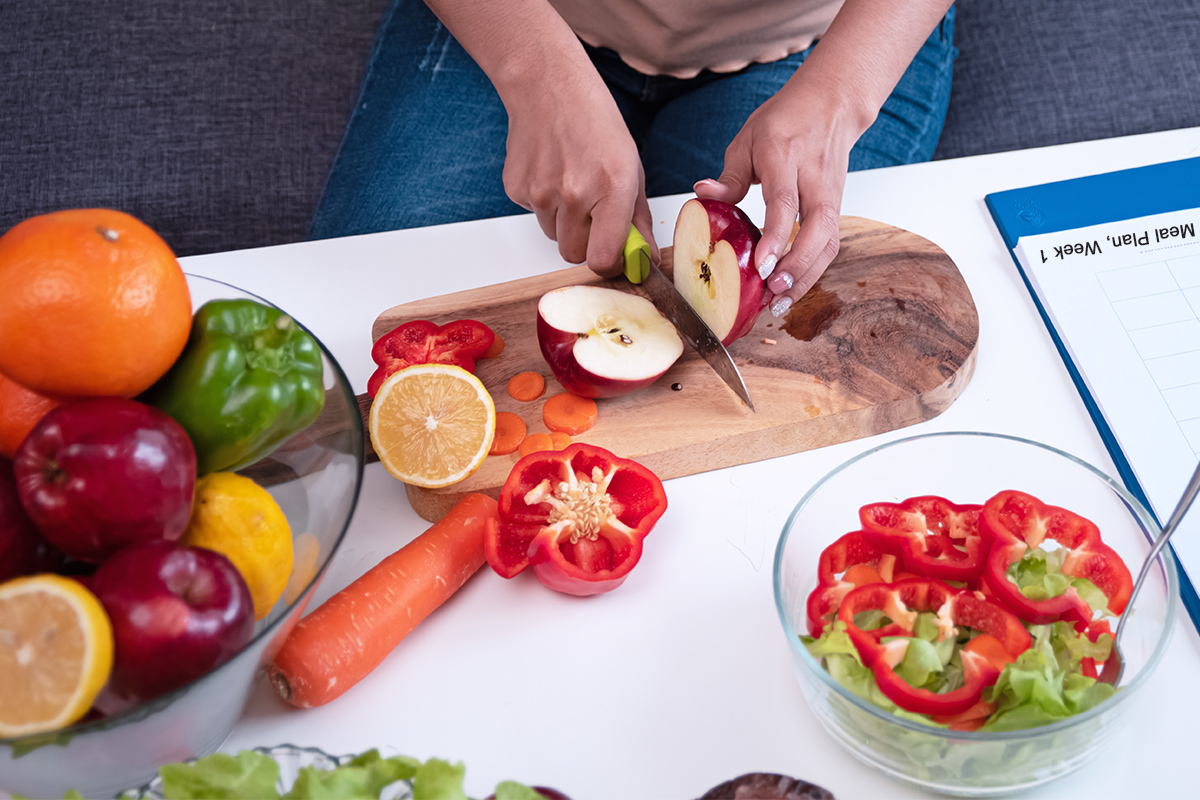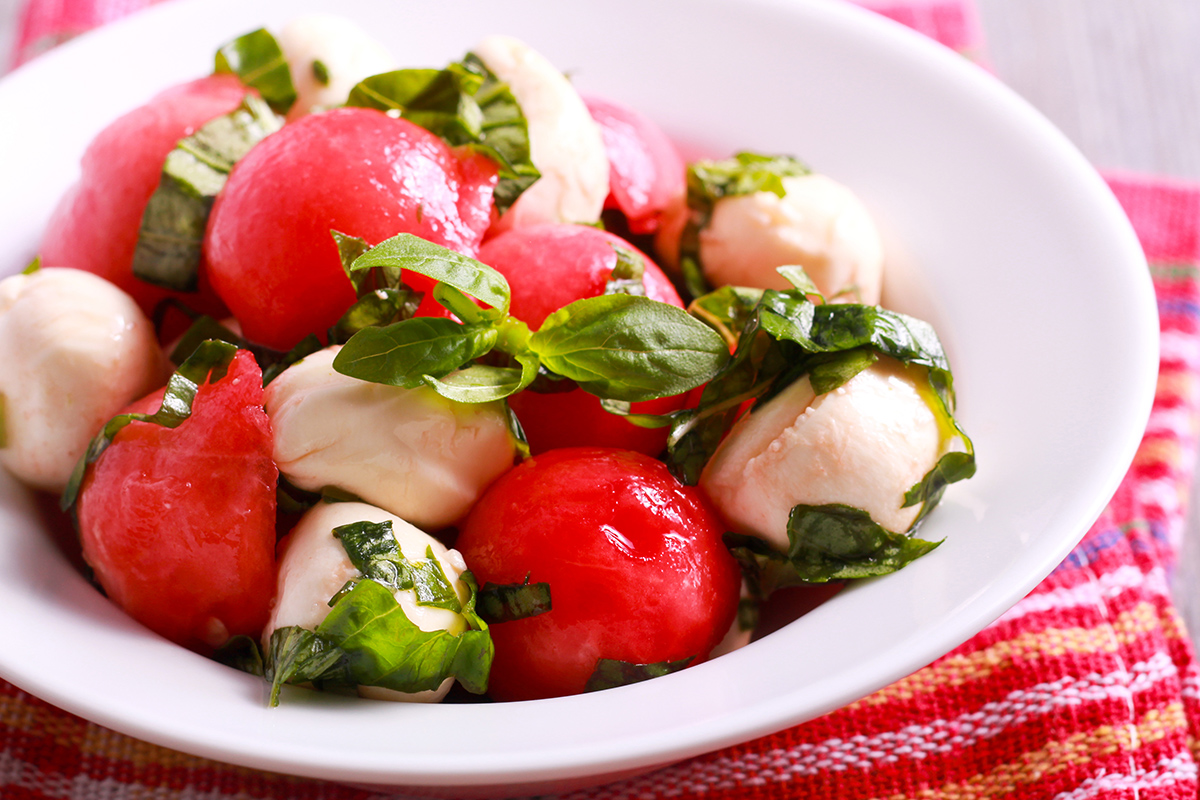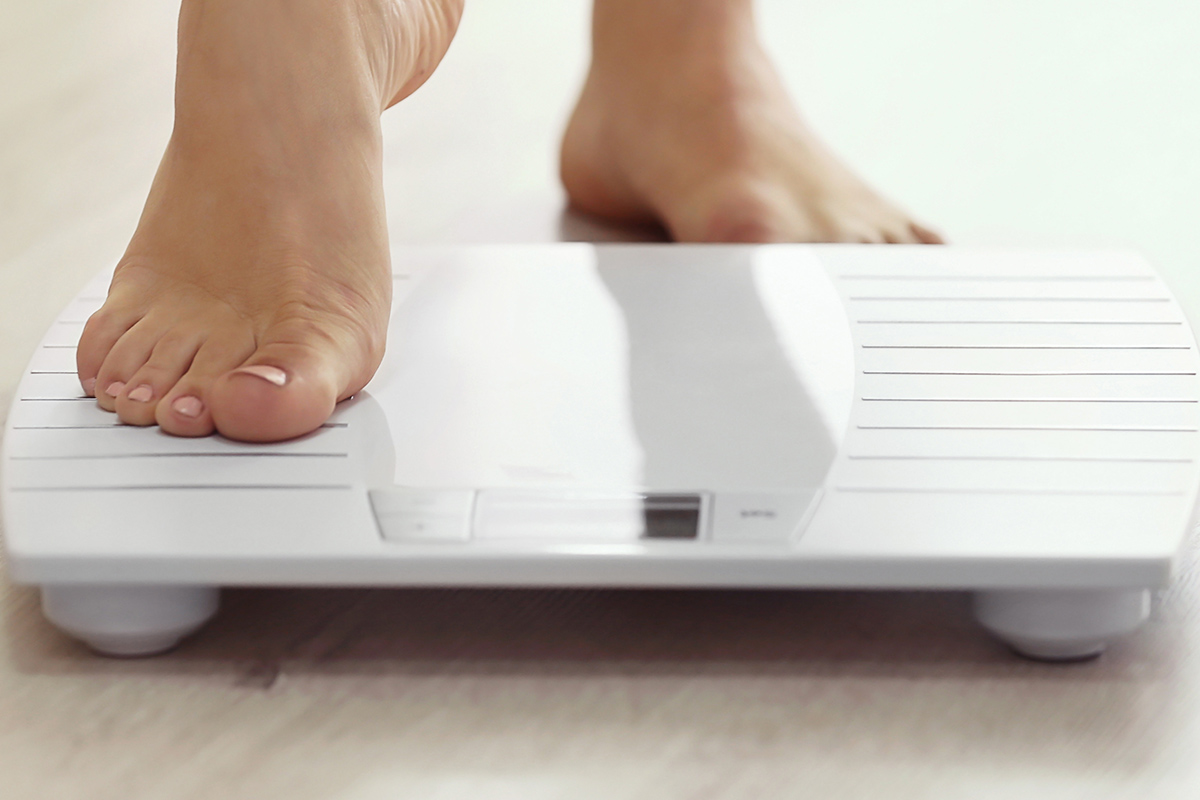Your Guide to Creating Your Own Meal Plan
Any good workout plan needs a good nutrition plan. We've compiled the best advice from our RDN, Debbie James, to help you construct your perfect meal plan.

Any good workout plan needs a good nutrition plan. Over the years, we’ve learned a lot from our registered dietitian, Debbie James. Today, we’re compiling pieces of her best advice to help you construct your perfect meal plan.



Many of our readers want to know what they should be eating for weight loss, for healthy weight gain, for muscle gain, and more. To help simplify your search for the right answer, look no further than the article: How to Create a Meal Plan.
Here, you will find Debbie’s step-by-step process to construct a nutrition plan that meets your desired calorie count and macronutrient content. Because you’re making it yourself, you can easily tailor your “menu” to include only the foods you will actually eat. Paired with examples of how to follow each step, and tips for success, this article is a great place to start building your nutrition plan.
If, before getting started, you’d like some general information on carbs, fats, and proteins, you can read her post: Let’s Talk About the Basics.

As you put together your meal plan, you’ll be looking for ideas. What are examples of healthy pairings? Should you go for protein or complex carbs? What are healthy substitutions for foods you’re trying to cut-out? Fortunately, Debbie has explored these types of questions as well.
In her post on Healthy Suggestions for Breakfast, Lunch, and Snacks, Debbie offers a breakdown of potential meals that are about 750 calories each.
Another post on Breakfast and Lunch Options on the Go offers some sample meals that come in at about 600 calories each.
Depending on what your daily caloric needs are, you can add, remove, or swap items with healthy alternatives from the list you made in the first step of creating your meal plan. Keep in mind that sample meal plans are not meant to be repeated every day. The hope is that you will follow the structure but switch up your food choices so you can benefit from the nutritional content in your various food choices.

Vegan – For vegan meals, tasty options abound. Not only does Debbie talk about Vegan Breakfasts, she offers possible food combinations to give any meal more variety and provides readers with a list of the top vegan sources of protein.
Vegetarian – What if your meal plan is leaning towards vegetarian? Here, Debbie lists some high protein and low carb vegetarian foods that you can work into your meal plan. You’ll also find her response to questions about How to Lose Weight on a Vegetarian Diet or How to Gain Healthy Weight on a Vegetarian Diet.
Low-Carb – If you’re trying to go low carb, you might be interested in this piece on Cauliflower Substitutions, the most recent craze in terms of rice and dough alternatives. Or, perhaps you want to know about the Best Time of Day to Eat Starchy Carbs. Yup, there’s a piece on that too!

Snacks are also on our radar when we’re structuring our food for the day. They keep us from getting too hungry before our next meal and can help keep us feeling full and energized throughout the day. What you choose to put on your snack list, however, is just as important as what goes into your meals. Debbie’s Super Snacking Guide offers a nice breakdown of what you should aim for when putting together your snacks.
If you still need some more ideas or feel like your options are limited by your dietary restrictions, you may find her answer to this reader’s question helpful. It offers some insight into healthy substitutions for sugary and salty snacks. Other answers share which snacks will keep hunger at bay and which can help boost your energy. We haven’t forgotten about our readers with gluten sensitivities or intolerances. This list on Gluten-Free Snacks can help guide your decision-making as well.
If this all sounds like just a little too much to read, you can listen to Debbie’s advice in many of our podcasts. Some relevant topics you might enjoy include:
How to Never Fail at a Diet Again
How to Meal Prep the Right Way
What You’ve Been Wanting to Know About Fad Diets (Paleo, Keto, and More)
Your nutrition questions are always welcome and Debbie is ready to help! Simply email nutrition@lafitness.com or submit your question online and it may be featured in an upcoming article! To access our monthly blog post highlights, subscribe to our newsletter, today!


I’m headed to Italy for two weeks on vacation. While I want to indulge a bit on wine, pasta, and pizza, I don’t want to lose all the gains I have made. What is your advice for a calorie responsible, yet delectable, Italian vacation?
– Jim J.

Italian food can be the model of a Mediterranean diet if it includes fresh vegetables, fish, fruit and nuts.
Here are my tips for traveling or dining out Italian-style:
The point is to only “spend” your calories on something that’s unique for that venue. In buona salute!
– Debbie J., MS, RD
This article should not replace any exercise program or restrictions, any dietary supplements or restrictions, or any other medical recommendations from your primary care physician. Before starting any exercise program or diet, make sure it is approved by your doctor.
Some questions have been edited for length and/or clarity.
 Have a nutrition question? Our registered dietitian is ready to help!
Have a nutrition question? Our registered dietitian is ready to help!
Email nutrition@lafitness.com or submit your question below and it may be featured in an upcoming article!
Any good workout plan needs a good nutrition plan. We've compiled the best advice from our RDN, Debbie James, to help you construct your perfect meal plan.
Debbie James, RDN, helps answer a reader’s question about how much protein is too much for the body to process.
Debbie James, RDN, helps answer a reader’s question on breakfast and working out.


Hello, I am a 147 lb, 24 year old, male. I am very active in terms of working out and playing sports. How many calories should I eat daily to maintain my body weight and gain more muscle? I was 198 lbs and have dropped down to this weight. Thank you.
– Rafi H.

Most equations would put your energy needs in the range of 2,800-3,000 calories per day, based on a height of 5 foot, 9 inches. Subtract 30 calories for every inch shorter or add 25 calories for every inch taller. That’s assuming your weight loss was intentional as you say you’d like to maintain now.
Your body doesn’t know such equations exist and your digestion, metabolism, genetics and hormones will act on their own. My recommendation would be to get a good look at how much you’re currently eating before making changes. You can do so using PersonalTracker from nutrihand.com or the Diet Analysis & Food Diary tool at happyforks.com.
Once you get a sense of your actual energy intake and carbohydrate, protein, and fat percentages, you can determine where you may need to make changes in macronutrient breakdown to build muscle.
– Debbie J., MS, RD
This article should not replace any exercise program or restrictions, any dietary supplements or restrictions, or any other medical recommendations from your primary care physician. Before starting any exercise program or diet, make sure it is approved by your doctor.
Some questions have been edited for length and/or clarity.
 Have a nutrition question? Our registered dietitian is ready to help!
Have a nutrition question? Our registered dietitian is ready to help!
Email nutrition@lafitness.com or submit your question below and it may be featured in an upcoming article!
Any good workout plan needs a good nutrition plan. We've compiled the best advice from our RDN, Debbie James, to help you construct your perfect meal plan.
Debbie James, RDN, helps answer a reader’s question about how much protein is too much for the body to process.
Debbie James, RDN, helps answer a reader’s question on breakfast and working out.


I am a 65 year old male. I weigh 295 pounds with borderline diabetes (A1c 6.2). I love watermelon because it hydrates and satisfies my sweet tooth. Can I eat too much watermelon?
– Joseph H.

Of course, you can eat too much of anything, even food with natural sugars! Watermelon is a more dilute fruit — its high water content (90%!) means less sugar per volume compared with other fruits. A single serving of watermelon at 2/3 cup (100 grams) provides only 7.6 gm carbohydrate. Eat a few servings and you’re back to a higher sugar intake.
Besides just focusing on controlling the sugar load, you should also consider balancing meals and snacks. It’s possible to modify the digestion/absorption speed of the fruit you eat. Consuming fat and protein (or fiber) with simple carbohydrates acts to slow digestion and absorption, thereby blunting the rise in blood sugar response. Example: add part-skim mozzarella, olive oil, basil & balsamic vinegar for a watermelon caprese salad.
Keep in mind your total calories, so reducing portions of fat and protein elsewhere in the day may be needed.
See our previous answers regarding fruit: Which Fruits Contain the Most Sugar, Which Fruits are Best to Eat and Do I Need to Limit Fruit.
Resources:
– Debbie J., MS, RD
This article should not replace any exercise program or restrictions, any dietary supplements or restrictions, or any other medical recommendations from your primary care physician. Before starting any exercise program or diet, make sure it is approved by your doctor.
Some questions have been edited for length and/or clarity.
 Have a nutrition question? Our registered dietitian is ready to help!
Have a nutrition question? Our registered dietitian is ready to help!
Email nutrition@lafitness.com or submit your question below and it may be featured in an upcoming article!
Any good workout plan needs a good nutrition plan. We've compiled the best advice from our RDN, Debbie James, to help you construct your perfect meal plan.
Debbie James, RDN, helps answer a reader’s question about how much protein is too much for the body to process.
Debbie James, RDN, helps answer a reader’s question on breakfast and working out.


Hi. I’m a member at LA Fitness. I started this weight loss journey 6 months ago. I weighed 287 pounds. I’m currently 210 pounds. I have been eating under 20 grams carbs per day and 1-3 grams of sugar per day. It’s like a version of keto. But I don’t do high fat. No cheat days. I work out daily. I’ve hit a plateau with my weight. What can I do?
– Stephanie S.

My question is: How has your body composition changed during your journey the last 6 months? Have you kept track of your measurements in addition to the scale? With a significant weight loss of 27% either you’ve lost some lean body mass (reduces metabolism), retained it, or have gained lean mass (hides fat loss on scale).
Strength training is a critical component of your exercise routine. You say you work out daily. Remember that the workload must be progressive – your body is stronger now than last year, so more resistance is needed for the same effect. The idea is called the overload principle. When you continue the same routine for your workouts after your body has adapted, you fail to make further progress.
Stress and lack of sleep can also contribute to rising cortisol levels which may impact metabolism and weight.
With very low carbohydrate, high protein and moderate fat intake it’s just as likely that you’re under-consuming calories now as it is you are overconsuming calories. Eating too little suppresses metabolism while eating more than you need prevents fat burning. Seemingly healthy keto foods like bone broth are higher in sodium which may cause you to retain water weight. Remember to focus on real, whole foods and avoid processed food products.
Breaking through a plateau may take a few weeks and everybody is different, so you will experience a shorter or longer duration of plateau than another person. If you still don’t see a change in body composition after a month of progressive exercise and fine-tuning your diet, consider starting over from where you are at now using the Body Weight Planner to determine calorie needs. Plan for only a 1-2 pound loss per week to avoid rapid weight loss (greater than 2 lbs./week) which contributes to muscle, water, and bone density loss.
– Debbie J., MS, RD
This article should not replace any exercise program or restrictions, any dietary supplements or restrictions, or any other medical recommendations from your primary care physician. Before starting any exercise program or diet, make sure it is approved by your doctor.
Some questions have been edited for length and/or clarity.
 Have a nutrition question? Our registered dietitian is ready to help!
Have a nutrition question? Our registered dietitian is ready to help!
Email nutrition@lafitness.com or submit your question below and it may be featured in an upcoming article!
Any good workout plan needs a good nutrition plan. We've compiled the best advice from our RDN, Debbie James, to help you construct your perfect meal plan.
Debbie James, RDN, helps answer a reader’s question about how much protein is too much for the body to process.
Debbie James, RDN, helps answer a reader’s question on breakfast and working out.
Be the first to know about exclusive
content, deals and promotions